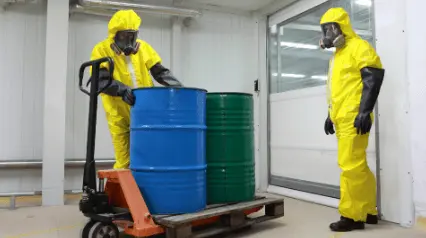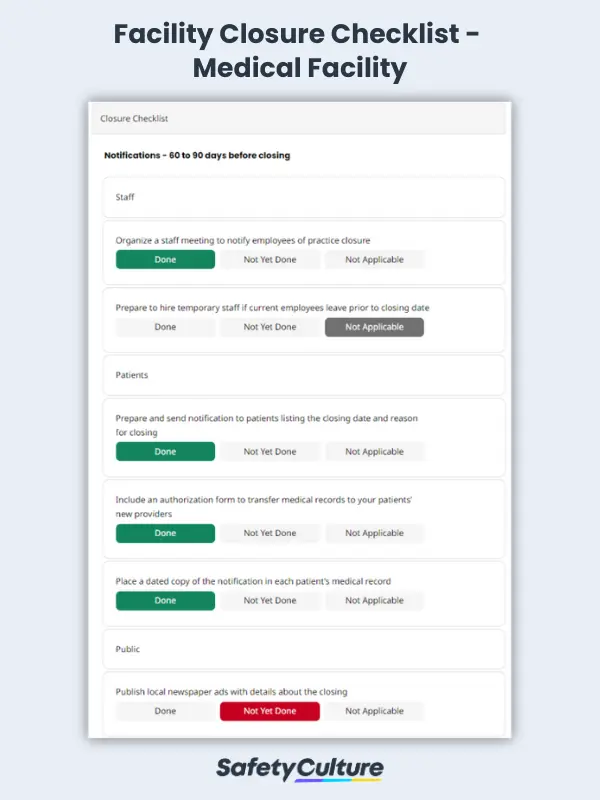What is Facility Closure?
Facility closure is the process of shutting down a site or facility following a set of tasks that include the proper disposal or, if appropriate, the containment of hazardous wastes and materials at the site to prevent the contamination of the immediate vicinity and the environment.
Why is Facility Closure Important?
Federal law requires proper facility closure of sites that handle or treat hazardous materials and wastes. Facility closure is also important for healthcare providers not only because the closure involves the disposal of waste and other hazardous materials, but also because of the need to ensure the security and accessibility of patient information to authorized persons even when a healthcare facility is no longer in operation.
Which Sites Benefit From Facility Closure?
Facility closure is most applicable to healthcare facilities and different types of Treatment, Storage and Disposal Facilities (TSDFs) or Hazardous Waste Management Units (HWMUs) which typically treat and temporarily or permanently store hazardous wastes.
Types of Facility Closure
The type of facility closure depends on how waste is disposed by a facility. Here are the two types according to the Environmental Protect Agency (EPA):
• Clean closure
This type of facility closure includes the complete removal of hazardous waste and, when applicable, decontamination or removal of contaminated soil and equipment at the site being closed.
• Closure with the waste in place
Sometimes called “closure as a landfill,” this mostly applies to facilities such as landfills and other TSDFs or HWMUs where removal of the waste is not possible and is instead sealed into the facility being closed following regulatory procedures.
The Facility Closure Process
Facility closure involves multiple professionals such as engineers and facility managers during the different stages of the life cycle of a facility. Below is an overview of the process involved during facility closure.
- Before the operation of a facility
Even before TSDFs or HWMUs are allowed to operate, they are legally required to produce a written closure and contingency plan to be approved and will be part of the facility’s permit to operate.
- During operation
Healthcare facilities should secure and update patients and other contact information so that, in case of a facility closure, the contact persons are sent the notification within the required timeline before closing the facility. Facility managers of sites that hold hazardous materials should ensure that incidents such as spills are mitigated and actions are taken to correct any issues are recorded.
- After closure
Unlike clean closure, closure with waste in place needs post-closure care that could last for up to 30 years. Depending on the site, post-closure can involve risk management to determine how to properly close or seal the unit or site and maintenance inspections and testing to ensure that there is no leachate or contamination of the groundwater and the vicinity surrounding the facility. According to the EPA, post-closure care can be shortened or extended beyond the 30 years depending on how the hazardous materials are contained.


